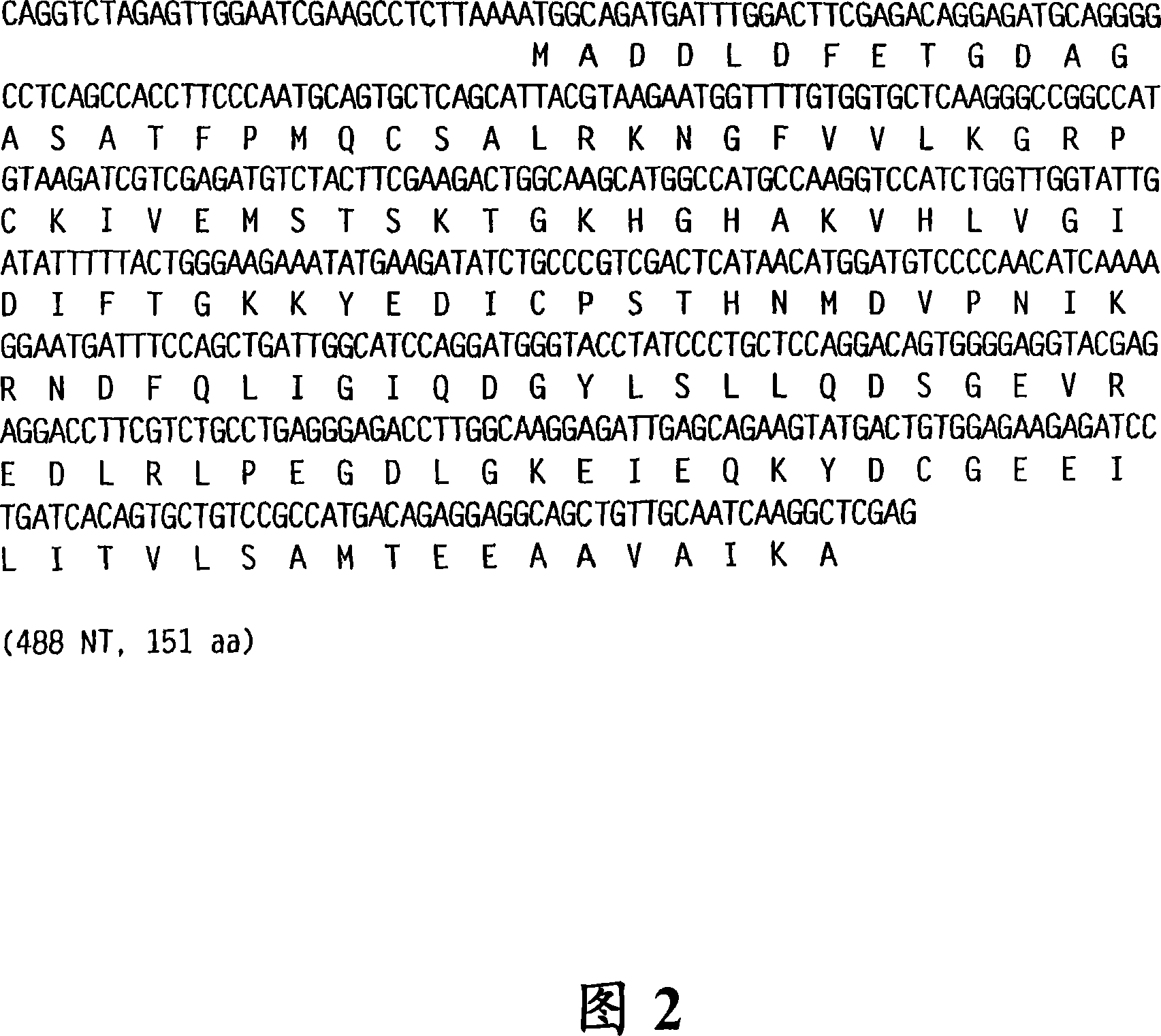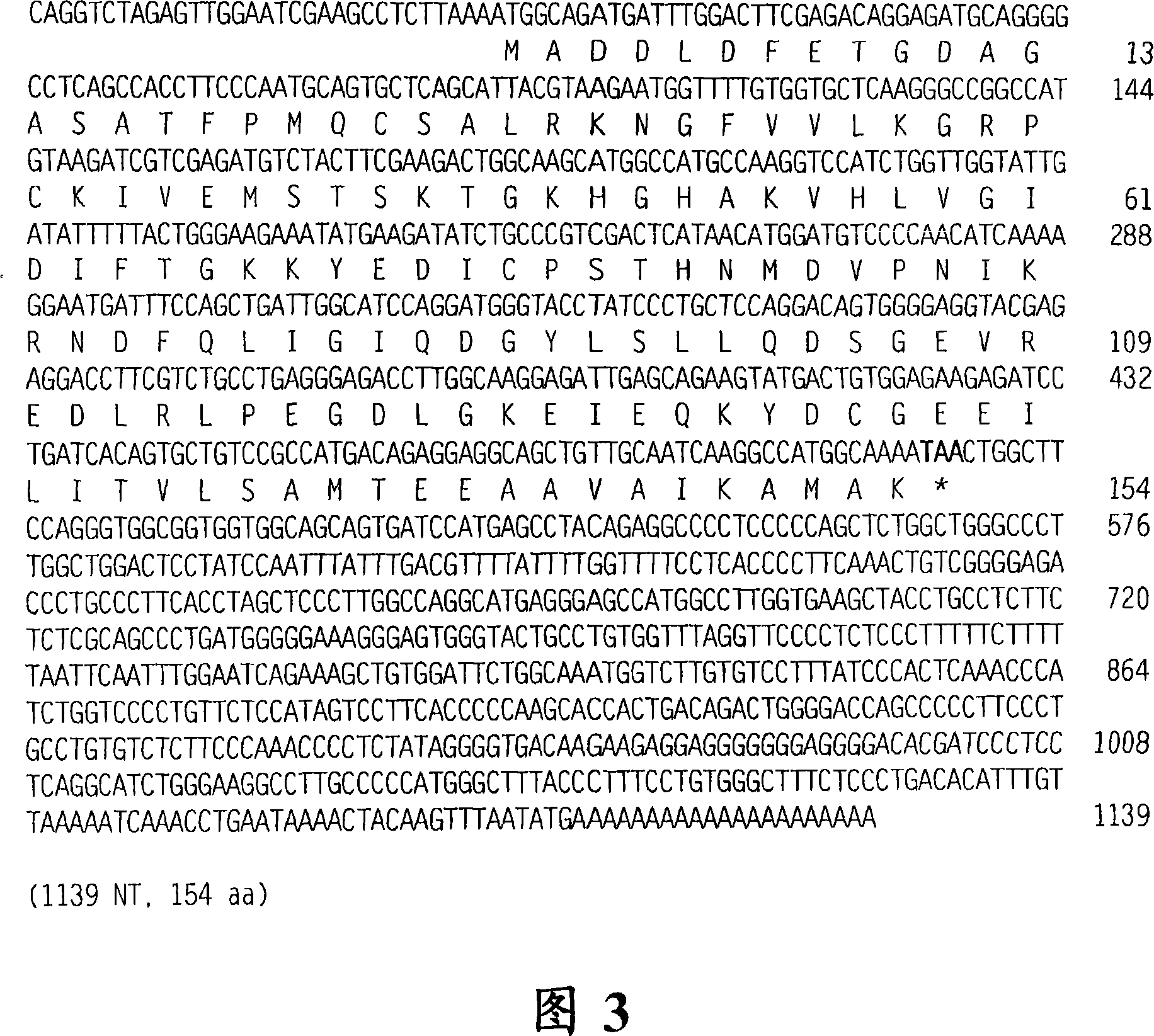Use of apoptosis-specific elF-5A siRNAs and antisense polynucleotides to inhibit/suppress an inflammatory response
An antisense oligonucleotide and specific technology, applied in the field of inhibiting the expression of apoptosis-specific eIF-5A and DHS, can solve the problem of decreased total protein synthesis
- Summary
- Abstract
- Description
- Claims
- Application Information
AI Technical Summary
Problems solved by technology
Method used
Image
Examples
preparation example Construction
[0155] Non-natural variants of polynucleotides, antisense oligonucleotides or proteins of eIF-5A or DHS of the invention can be readily prepared using recombinant techniques. These variants include, but are not limited to, those resulting from deletions, additions and substitutions in nucleotide or amino acid sequences. One example of a substitution is a conservative amino acid substitution. This substitution is the replacement of a given amino acid in a protein with another amino acid with similar properties. Typical substitutions that can be considered as conservative substitutions are one or more substitutions between fatty amino acids (Ala, Val, Leu, Ile); exchanges between hydroxyl amino acids Ser and Thr; acidic amino acids Asp and Interchanges between Glu; substitutions between Asn and Gln amino acids; substitutions between basic amino acids Lys and Arg; substitutions between aromatic amino acids Phe and Tyr. For an explanation of which amino acid substitutions may re...
Embodiment 1
[0214] Observation of apoptosis in rat corpus luteum using DNA laddering
[0215] The extent of apoptosis can be determined using a DNA ladder assay. Genomic DNA was isolated from dispersed corpus luteum cells or from isolated corpus luteum tissue using the QIAamp DNA BloodKit (Qiagen) according to the instruction manual. Luteal tissue was removed before induction of apoptosis (treatment with PGF-2α for 1 h) and 1 h and 24 h after induction of apoptosis. Take 500ng genomic DNA, and 0.2μCi[α- 32 P]dCTP, 1mM Tris, 0.5mM EDTA, 3U Klenow enzyme, and 0.2pM each of dATP, dGTP, and dTTP were co-incubated for 30min at room temperature, so as to end-label the isolated DNA. Samples were chromatographed on a 1 ml Sepadex G-50 column to remove unlabeled nucleotides as described by Sambrook et al. Samples were then subjected to Tris-acetate-EDTA (1.8%) gel electrophoresis. The gel was vacuum-dried at room temperature for 30 min, and exposed to X-ray film at -80 °C for 24 h.
[0216] I...
Embodiment 2
[0245] This example illustrates the regulation of apoptosis by apoptosis-specific eIF-5A (apoptosis-specific eIF-5A in the sense direction enhances apoptosis).
[0246] Culture COS-7 cells, RNA isolation
[0247] COS-7 cells, an African green monkey kidney fibroblast-like cell line transformed with a mutant of SV40 (encoding wild T antigen), were used for all transfection experiments. COS-7 cells were cultured with Dulbecco's modified Eagle medium (DMEM) (containing 0.584 g / L L-glutamine, 4.5 g / L glucose and 0.37% sodium bicarbonate). 10% fetal bovine serum (FBS) and 100 units of penicillin / streptomycin were added to the medium. At 37°C, 5% CO 2 and 95% air, the cells were cultured in a humidified environment. Every 3-4 days, the adherent cells were separated with 0.25% trypsin and 1 mM EDTA solution for passage. The detached cells were distributed in a 1:10 split ratio into new dishes containing fresh medium.
[0248] COS-7 cells used for RNA isolation were cultured in 1...
PUM
 Login to View More
Login to View More Abstract
Description
Claims
Application Information
 Login to View More
Login to View More - R&D
- Intellectual Property
- Life Sciences
- Materials
- Tech Scout
- Unparalleled Data Quality
- Higher Quality Content
- 60% Fewer Hallucinations
Browse by: Latest US Patents, China's latest patents, Technical Efficacy Thesaurus, Application Domain, Technology Topic, Popular Technical Reports.
© 2025 PatSnap. All rights reserved.Legal|Privacy policy|Modern Slavery Act Transparency Statement|Sitemap|About US| Contact US: help@patsnap.com



